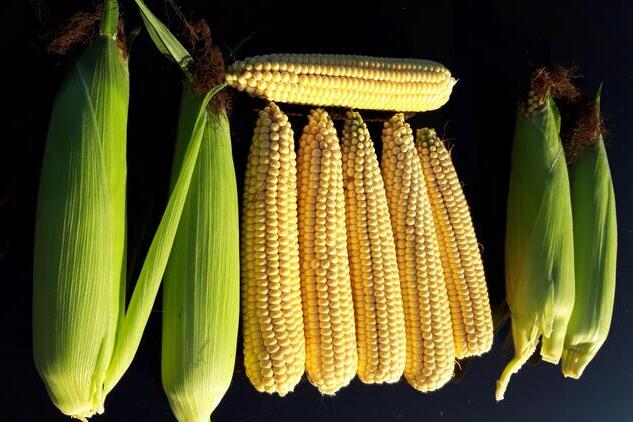Sweet corn sweltering in summer heat spells uncertainty for corn lovers
Lauren
Quinn
Few things say summer in America more than buttery corn on the cob, but as summer temperatures climb to unprecedented levels, the future of sweet corn may not be so sweet. New University of Illinois research shows sweet corn yields drop significantly with extreme heat during flowering, especially in rainfed fields in the Midwest.
Climate projections don’t just predict a handful of hot days
going forward. The U.S. Global Change Research Program predicts 20 to 30 more
days over 32 C [about 90 F] by mid-century across much of the
U.S.
“The reality is that producing sweet corn, one of the most popular vegetable crops in the U.S., will be more difficult in the future. We need to develop new approaches and technologies to help crops adapt to climate change,” says Daljeet Dhaliwal, former graduate research assistant and lead author on the study published in Scientific Reports.
Dhaliwal worked with Marty Williams, USDA-ARS
ecologist and affiliate professor in the Department
of Crop Sciences at Illinois, to document yield response of
sweet corn to growing season temperature and precipitation over a 27-year
period. Williams obtained private data from sweet corn processors for 16,040
individual fields in Illinois, Minnesota, Washington, and Wisconsin, providing
a much finer resolution than similar studies in field corn using county-level
data.
“Our analysis reveals that small temperature changes have a
greater influence on crop yield compared to small precipitation changes for
both rainfed and irrigated fields in the Midwest and Northwest, but rainfed
production shows greater sensitivities,” Williams says.
He adds that extreme temperatures during flowering can influence
pollen viability, fertilization, kernel abortion, and other processes.
“If there's a bad time for extreme heat, it's during flowering.
That’s especially true in a crop where ear quality is so important. With heat
stress during flowering, you can have ears with fewer kernels or very misshapen
kernels that look nothing like what the consumer is expecting,” Williams says.
This study used the concept of “extreme degree days” to capture
the cumulative effect of temperatures above 30 C [86 F] during flowering on
sweet corn yield. Degree days are normally calculated by taking the average of
high and low temperatures over a given 24-hour period. To calculate extreme
degree days, Dhaliwal summed degree days over 30 C.
For rainfed regions, every extreme degree day during flowering
led to an additional yield loss of 2%. For irrigated systems, yield loss was
less severe; just 0.5% per degree day over 30 C.
But more than one day at 40 C [104 F] could drop yield by 20%.
This result was based on season-long hourly temperature data, not degree days.
The pattern suggests irrigation could ameliorate the effects of
extreme heat, but climate scenarios also warn water could be in short supply in
the future. The authors note that if sweet corn yield and quality continues to
decline due to climate extremes, planting times or production areas may need to
shift to avoid the hottest temperatures.
In the meantime, Williams says there’s only so much breeders can
do to build in heat tolerance.
“The question becomes how do we develop sweet corn to become
more resilient to increasing environmental stressors? To what extent can you do
that by managing the crop versus improving the crop itself? These are hard
questions.
“The thing we really need to do to prevent worse outcomes is to
minimize further climate change. But we're in a period where we're going have
to deal with what's already set in motion,” Williams says. “Our trajectory is
already set for the next several decades.”
The article, “Evidence of sweet corn yield losses from rising
temperatures,” is published in Scientific Reports [DOI: 10.1038/s41598-022-23237-2].
The Department of Crop Sciences is in the College of
Agricultural, Consumer and Environmental Sciences at the University of Illinois
Urbana-Champaign.
